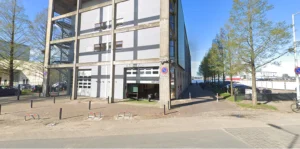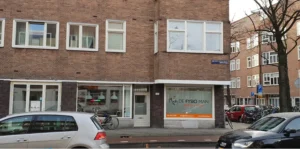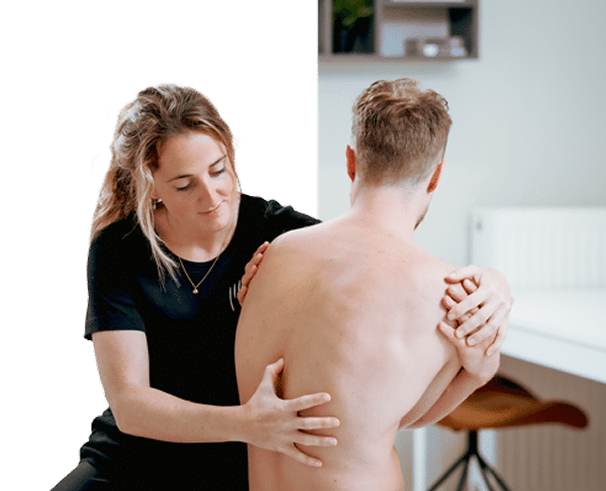Help, I have pain in my legs
Do you experience painful, tired legs while walking that only disappear when you stand still for a while? This may indicate etalage legs, a common condition that can severely limit your range of motion. Fortunately, with the right approach and guidance, you can reduce the symptoms and improve your fitness. In this article, we explain what etalage legs are, what causes them, and what you can do yourself to alleviate the symptoms.
In brief
- What are etalage legs? Etalage legs are a narrowing of the arteries that causes insufficient blood flow in your legs, which causes pain while walking.
- Symptoms: Pain, cramping or fatigue in your legs that disappear after standing still for a short time. Sometimes you may also have cold feet or poorly healing wounds.
- Causes: Arteriosclerosis, smoking, unhealthy lifestyle, diabetes, high blood pressure or elevated cholesterol.
- What can you do yourself? Quit smoking, exercise more, eat healthier and take good care of your feet.
- What can a physical therapist do for you? Gait therapy helps improve your circulation and increase your walking distance.

What are etalage legs?
Etalage legs, medically known as intermittent claudication, are caused by a narrowing of the arteries in your legs. Due to arteriosclerosis (atherosclerosis), less blood flows to your muscles, especially during exertion such as walking. This causes pain, cramping or a heavy feeling in your legs.
The name “shop window legs“ comes from the fact that people often stand for a while – for example, in front of a shop window – until the pain subsides and they can continue walking.
Symptoms of etalage legs
The main symptoms in etalage legs are:
- Pain or cramping in the legs when walking, often in the calf, foot, thigh or buttock.
- Quicker complaints with faster walking, walking up an incline or cold weather.
- Fatigue or a heavy feeling in the legs.
- Cold feet and poorly healing wounds, especially in advanced cases.
- Symptoms often disappear after 2-10 minutes of standing still, as your muscles require less oxygen.
In severe cases, nocturnal pain or circulatory problems (such as wounds or discoloration of the feet) may also occur.
What are the causes?
The most common cause of etal legs is arteriosclerosis: fatty deposits in the vessel wall make it harder for blood to flow through the arteries. Risk factors and possible causes are:
- Smoking: the biggest culprit in arteriosclerosis.
- Unhealthy lifestyle: little exercise, unhealthy eating and obesity.
- High blood pressure and high cholesterol.
- Diabetes (diabetes).
- Hereditary predisposition to cardiovascular disease.
What can you do yourself?
You can do a lot yourself to reduce the symptoms of etal legs and prevent further problems:
1. Keep walking, even if it hurts
- Walking stimulates blood flow in your legs. By walking daily, you train your muscles and blood vessels.
- Try to walk a little farther and farther before pausing. Walking training may hurt a little, but it is not harmful.
2. Quit smoking
Smoking accelerates artery calcification and reduces oxygen supply to your muscles. Quitting smoking is the most important step to reduce your symptoms. Need help? Your physical therapist or family doctor can support you in this.
3. Eat healthy and maintain a healthy lifestyle
- Healthy eating: Choose foods rich in fiber, vegetables, fruits, healthy fats and lean proteins. Avoid salt and sugar.
- Get plenty of exercise: Combine walking with other forms of exercise such as biking or swimming to improve your overall fitness.
- Stress management: Stress can make your symptoms worse. Make sure you relax and get enough sleep.
4. Check your feet regularly
- Pay attention to wounds, especially if you have diabetes, as they are slower to heal with poor circulation.
- Wear well-fitting shoes and do not walk barefoot to avoid wounds.

What can a physical therapist do for you?
A specialized physical therapist can guide you with gait therapy, a proven effective treatment for etalage legs. In gait therapy, you work on:
- Improve blood flow: Regular controlled walking improves blood flow in your legs.
- Increasing your walking distance: You learn to walk longer and longer before you have to stop.
- Strengthen your fitness and muscles: Therapy not only helps your legs, but also your overall fitness.
Treatment at The Physio Man
At The Physio Man, we offer specialized walking therapy and guidance for etalage legs. Our approach consists of:
- Intake and consultation: We discuss your symptoms and create a customized plan.
- Running Training: You build up your running distance gradually, under professional guidance.
- Lifestyle advice: We help you quit smoking, eat healthier and exercise more.
- Foot care: We provide tips to prevent wounds and complications.
Gait therapy is not only effective, but often helps prevent surgery. Our therapists are ready to support you every step of the way.
Do you recognize yourself in these complaints?
Don’t wait any longer and contact The Physio Man today. With our personalized approach and effective running therapy, we will help you move pain-free and with confidence again. Make an appointment now and work together on your recovery and health!
Treat your neck pain with physical therapy from The Physio Man
Are you dealing with etalage legs or pain while walking? If the pain persists, don’t hesitate to make an appointment at De Fysio Man in Amsterdam. Our physiotherapists are here for you. Let’s work together towards a pain-free and healthier life! View all our physiotherapies here, or make an appointment right away.
Why choose The Physio Man?
- Latest treatment techniques
- We look at the body as a whole
- 80% of our patients are complaint-free within a few treatments
- No long waiting lists
- Also open in the evening
At The Physio Man, we offer a wide range of treatment options aimed at reducing symptoms and improving quality of life. For questions or an intake consultation, contact us. Email info@defysioman.nl or call 020-3542926. Prefer to come by? Visit us at Jan van Galenstraat 301 in Amsterdam.
For more information also watch the following video:


